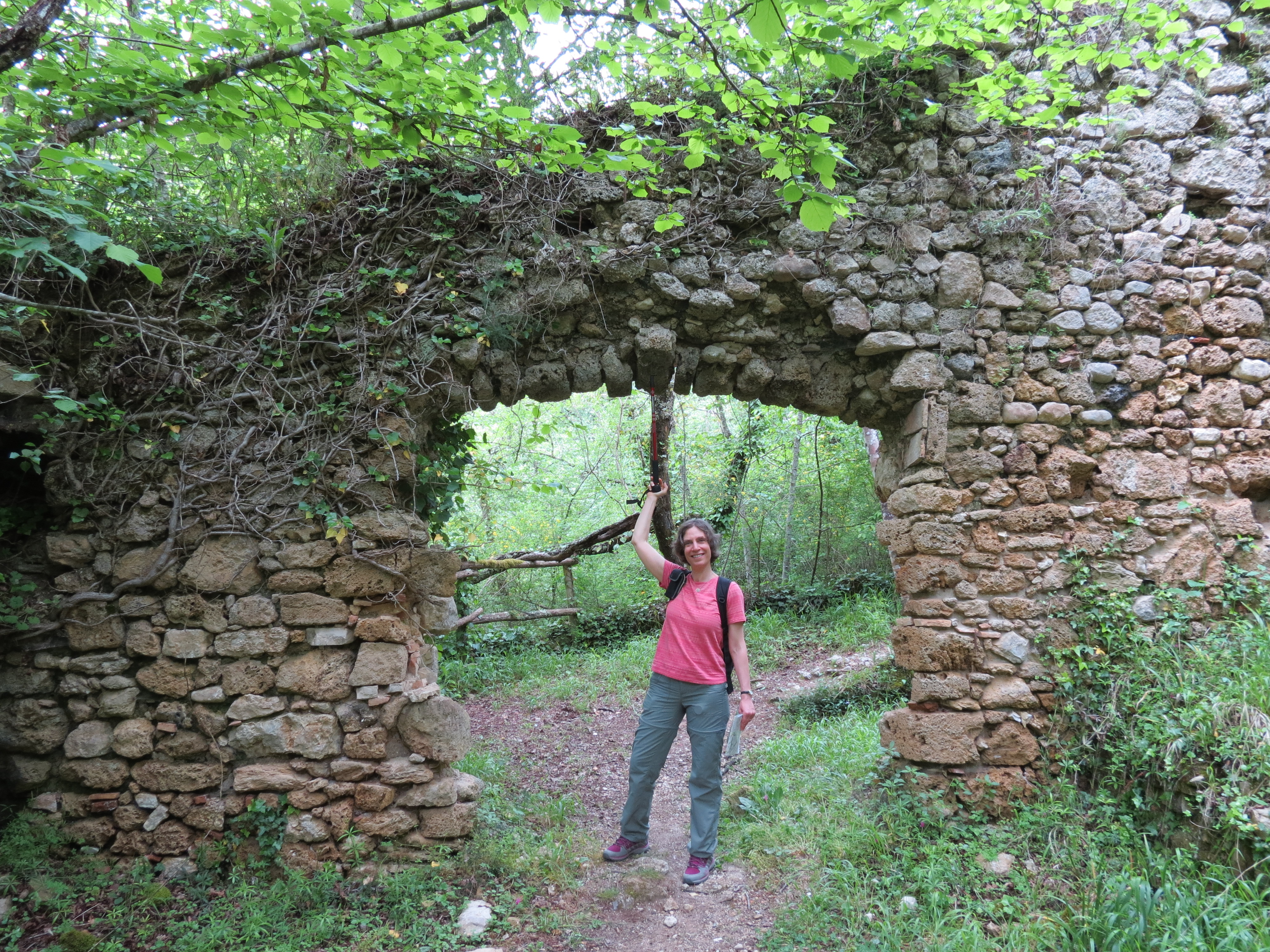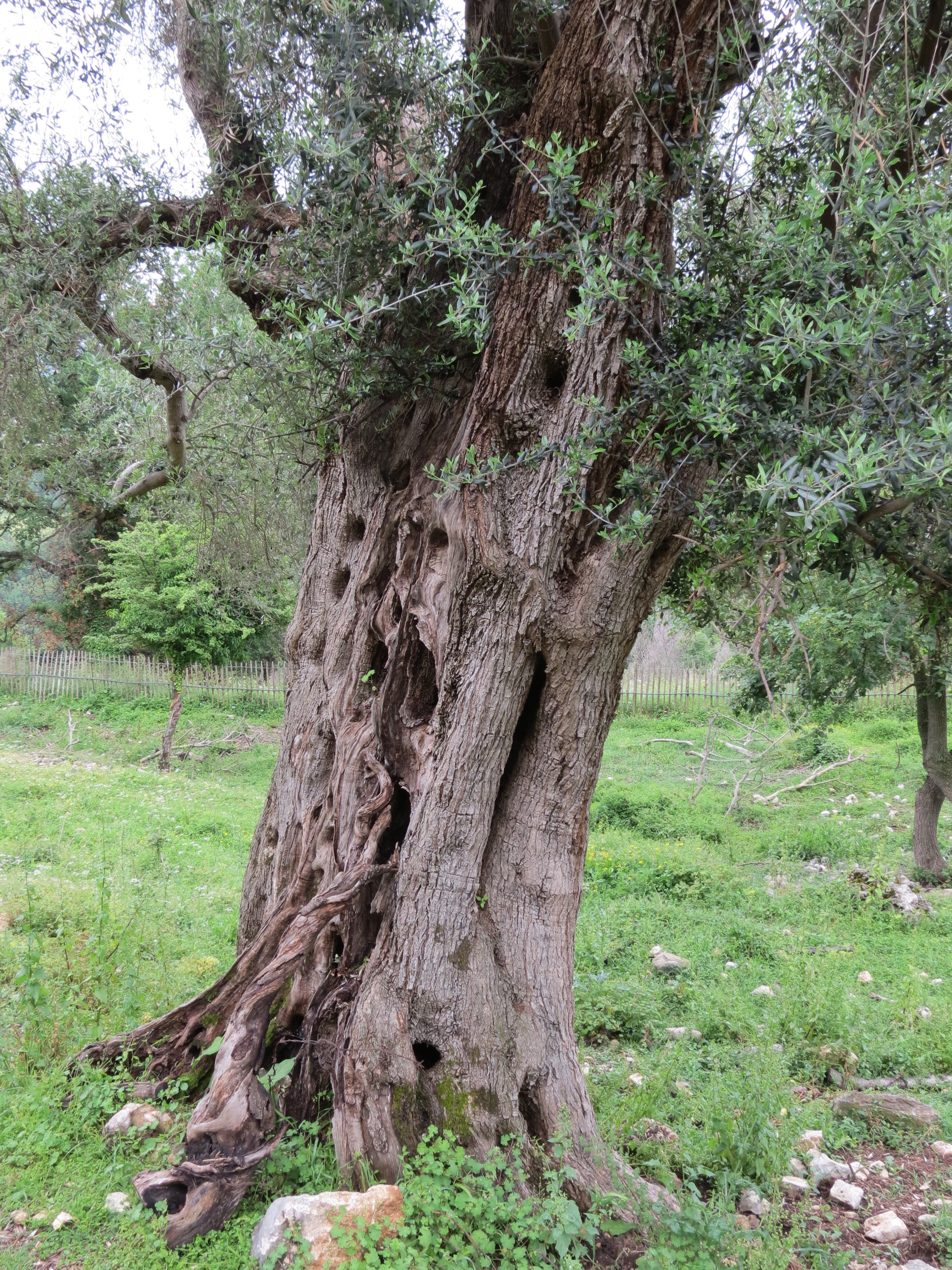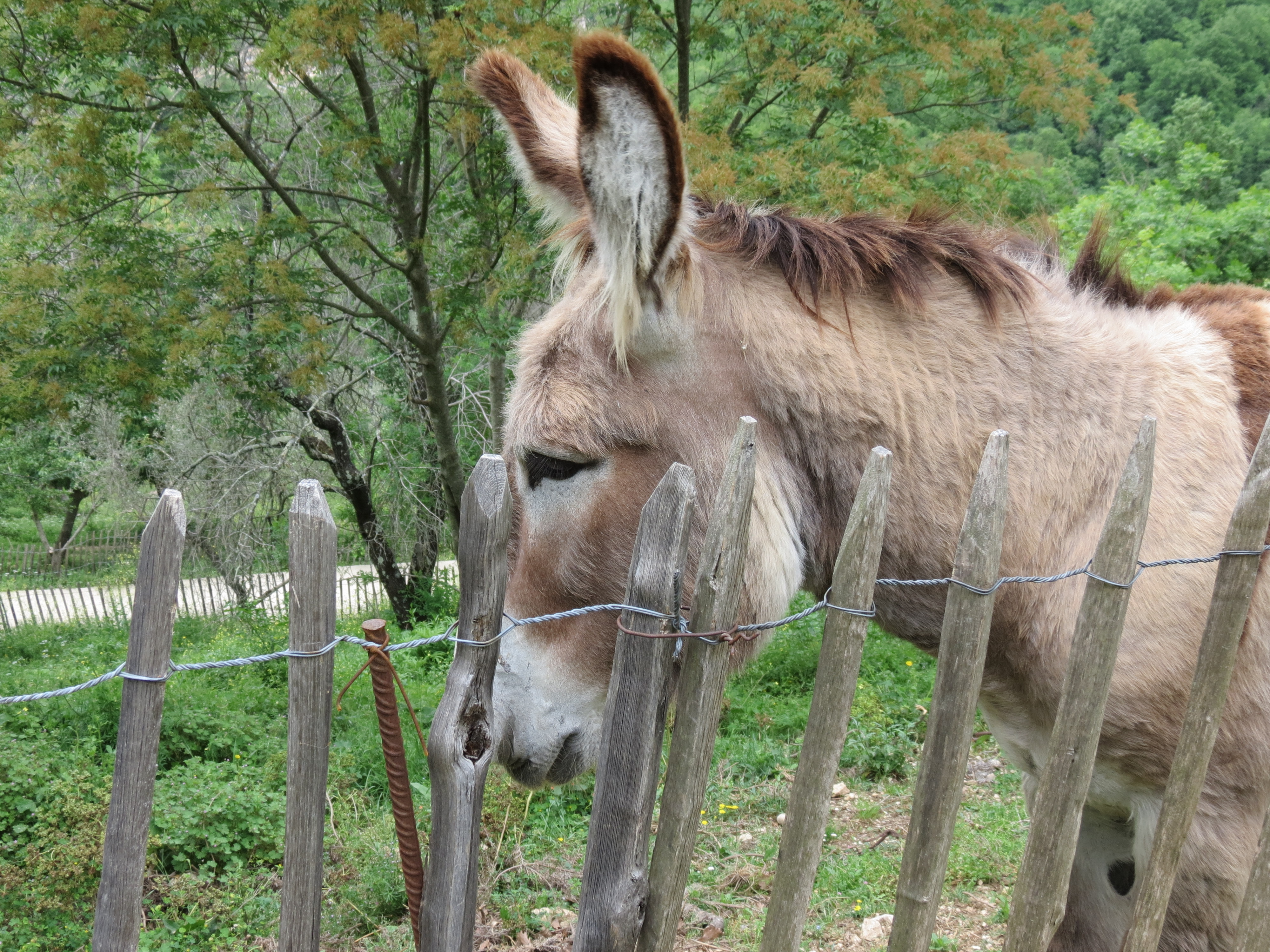
|
–Geoff-Hart.com:–Editing, Writing, and Translation —Home —Services —Books —Articles —Resources —Fiction —Contact me —Français |
You are here: Home (fiction) --> Italy 2018 --> May 5: Misciani to Mompeo
Vous êtes ici : Accueil (fiction) --> Italy 2018 --> May 5: Misciani to Mompeo
Previous day: May 4: Casperia to Misciani. Today we leave Misciani to walk to Mompeo, the final stop on our hike. On Foot Holidays classes this as a "medium" hike: 5.5 hours to cover 13 km, with a cumulative uphill distance of 450 m (plus a like amount downhill). Tonight, we stay at La Maison Sabina.
Today was our last full day in Italy, and as noted above, we decided to take it a bit easy and spend time with Stefano on his farm, doing much lighter and shorter hiking and learning a bit about the agriturismo business, and how restoration of Roman ruins fits into what must be an insanely busy day for him.
Our drive to Stefano’s farm in Mompeo was uneventful. It’s named La Mole sul Farfa after a medieval relic (mole = mill) found below his farmhouse, which is above (sul) the Farfa river. It’s on a steep hillslope, and has gorgeous views looking south over deeply incised valleys, with the slopes covered by mixed forest. We were greeted by Stefano’s wife, Elisabeth, who offered us wine and coffee, which we savored outdoors while watching the play of light on the mountains change as a storm rolled in. At first, it seemed like it was going to miss us, so we took Elisabeth’s advice to head steeply downhill to the river to see the remains of the medieval water-powered mill for grinding grains. It’s always impressive to see most of a structure standing more than 1000 years later, and it was worth the sweaty hike downhill and back up again to see.

A medieval water mill.
When we returned, we shared the patio with a Belgian family (parents, adult children, and grandson) who were staying at the agriturismo, and we basically just hung out for a couple hours while watching their 3-year-old kid, who was a overflowing source of energy, racing about, sometimes alone, and sometimes with grandparents in hot pursuit. As we watched, the long-promised thunderstorm rolled in through the valley. The people at La Fienile had packed us a picnic lunch that was tasty and filling: a load of cherry tomatoes and fresh mozzarella, paired with cold omelette slices and good crusty bread. We ate it al fresco, then it grew cold and chased us indoors.
Not long after lunch, Stefano returned from his morning chores and told us he’d be available to take us to the old Roman ruins he’d discovered on his property. Interesting story: When he and Elisabeth decided to build a home, they started by asking the locals where there was anything really old he could renovate. They found him a small stone house (maybe 600 square feet) that was suitably antique. The people who’d sold him the land told him there were caves nearby, which interested him enough to explore—and lo and behold, the big cave visible from his new house was an ancient Roman cistern, dating back to around 300 BC. A little more poking around revealed that his home was built atop not caves, as the locals had said, but rather the basement of a 1-hectare (about 2.5 acres) Roman villa that subsequent investigations revealed to have been continuously inhabited until about 600 AD—nearly 1000 years!
One of the coolest discoveries was a series of three stone troughs used in olive oil production: the oil and water components of the olives are mixed during crushing in the center trough, and the denser water flows out through a deep drain into a lower trough, while the less dense oil floats to the top and flows out through a notch at the top of the crushing trough, into a collection trough.
Stefano is a bundle of energy—as you might expect from someone who is simultaneously running a farm, running a B&B with his wife, and playing nanny to potentially dozens of hikers roaming the trails he somehow found time to lay out for people like us. He gets passionately into his story, narrating with hands and slaps on solid objects (or your thigh if you’re close enough), punctuating the narration with epithets as appropriate (“I’m sorry the weather is shit today”). Best line was when he emulated the response of the government antiquities official after he reported his find: “Another fucking Roman villa? What the Hell do you want me to do about that?” With no help from the government, he’s been slowly excavating the many rooms under his home, with help from local archeologists, revealing its impressive size.
With no government support or funding, Stefano’s been funding his dig using the money earned from the agriturismo, selling tour tickets to guests, and donations, while also taking advantage of as much agricultural volunteer labor as possible. He’s part of the “Workers on Organic Farms” (Woof!) movement, which pairs volunteers with farmers who need help and can provide room and board but not a salary, and has generally had pretty good luck with his workers. But he also told us some hilarious stories of the few exceptions, including (some details elided to protect the guilty) the eminent concert pianist who didn’t understand that farming was manual labor and kept refusing jobs that might endanger her fingers*; the American woman who nearly caused a full-blown riot when she insisted that you couldn’t drive from North America to South America because of the sea between the two continents, while the other workers refused to accept her superior knowledge**; and the male student who didn’t realize that you had to bathe periodically if you were working hard in a Mediterranean climate and also had to wash your high-tech underwear periodically***.
* She annoyed her co-workers so much that they chipped in to buy her a ticket home just to get rid of her. (Stefano mimed throwing handfuls of money.)
** She hadn’t realized that the two continents being presented on separate pages of the map was a size issue, not the presence of an ocean between them.
*** Polypropylene is great for wicking away sweat, but is (in)famously stinky if not washed frequently.
The ruins were cool enough, but to me, the most exciting find was the olive orchard that lay between his old home and the cistern uphill: when he brought in scientists from a local university to investigate its antiquity, they discovered a dozen distinct olive genotypes (versus one to four in a typical modern orchard) that existed in no other olive collection that has been genotyped, and trees at least 1600 years old. That’s way cool, not to mention a precious genetic resource. So needless to say, I got excited. The Montreal Botanical Gardens publish a quarterly magazine that’s fascinating, and they recently had a special issue on olives. I told Stefano I’d do some snooping and try to put him in touch with some of the researchers who’d been interviewed for that special issue. I’m sure some of them will be fascinated, and with a bit of persuasion, the gardens themselves might be talked into funding some of his work, or even collecting samples to propagate so they can preserve this genetic resource from nearly 2000 years ago!

A 1600-year-old olive tree!
Update note: Stefano uses donkeys to keep the orchard grass mowed, as they're apparently by far the most efficient and ecologically friendly approach: better than horses (which break legs easily in rough terrain), cows and goats (which damage the trees), and sheep (which overeat the grass). Here's an example of the world's cutest lawn-mower:

We bought a batch of olive oil from Stefano and Elisabeth that we’ll be bringing home for ourselves, family, and friends. At the end of the day, Stefano drove us to our final B&B, La Maison Sabina, which is located in Fara Sabina. We chose the place because it’s about a 15-minute walk from the train station nearest to Mompeo. It offers two runs straight to Fumicino Rome airport in time for our flight, from whence we’ll return home. It’s a small and simple place, with young (20-something) owners who were very friendly and eager to hear about where we’d been. We managed to communicate the basics despite their limited English and my limited Italian. Clean, relatively quiet, but the A/C wasn’t working, so we had to keep the window open for ventilation.
Dinner was simple and cheap: there was a neighborhood “sell by the slice” pizza place just a few minutes from Maison Sabina, and even though it was definitely “street” pizza rather than fancy restaurant fare, it was darned good. We brought it back to our room and shared slices with red peppers and tomato sauce, artichoke hearts with cherry tomatoes, and zucchini with mozzerella. Washed down with a shared pint of Peroni. Not romantic in the candlelit dinner sense, but definitely in the shared last meal in Italy sense.
Next day: May 6: Homeward bound
©2004–2025 Geoffrey Hart. All rights reserved.